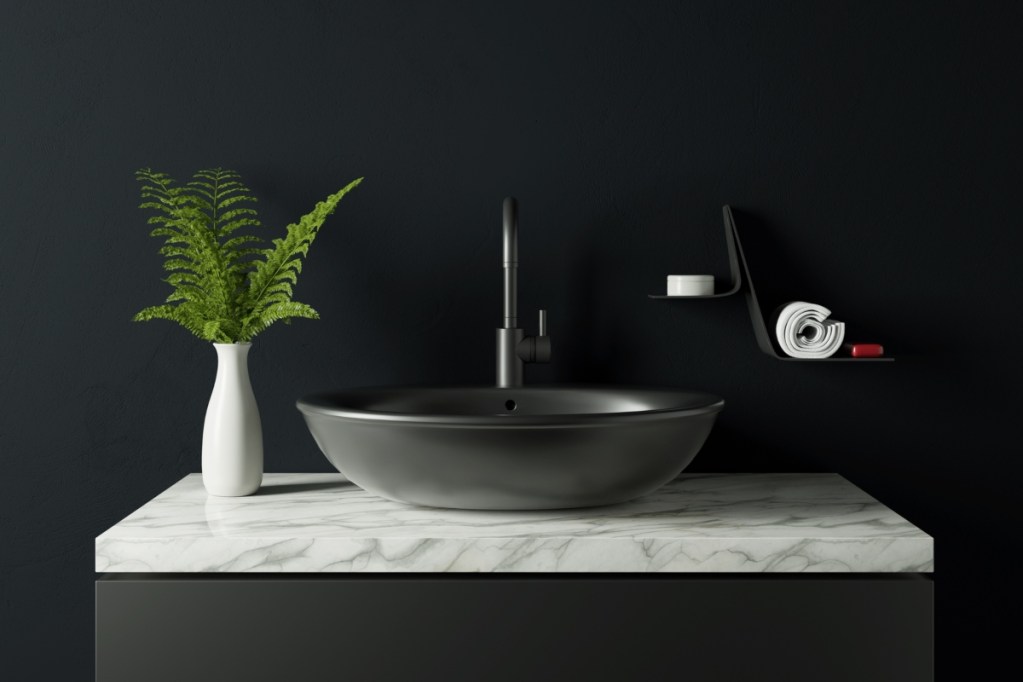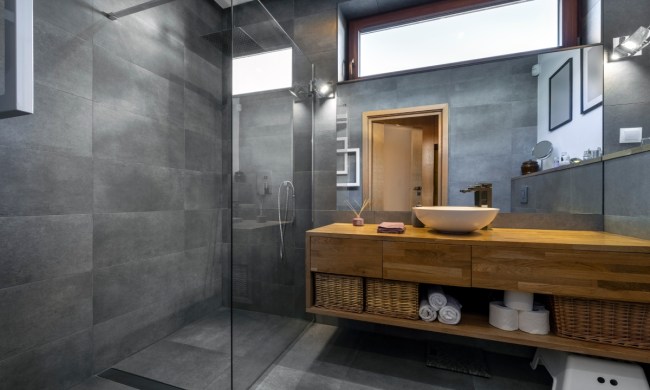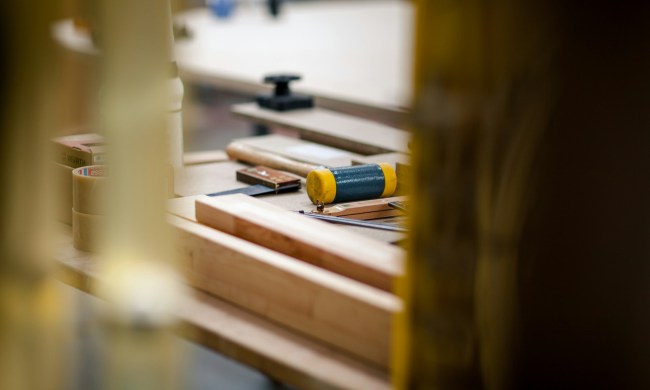Bathrooms present unique challenges when it comes to moisture control. Whether you’re planning a full-scale bathroom remodel or simply want to swap your existing tile for drywall, you’ll need to know which drywall for bathroom projects is best for your space. Finding moisture and mold-resistant materials that remain sturdy in high-humidity environments where temperatures fluctuate is vital for an effective design.
So, we are sharing everything you need to know before you begin gathering your reno materials to add drywall to your bathroom.
What is drywall?

Drywall is made of a flat panel of gypsum sandwiched between layers of thick sheets of paper. It’s a lightweight and relatively sturdy material used in construction to create a smooth surface for walls and ceilings. This material can go by many names, such as sheetrock, gypsum board, wall board, or plasterboard. No matter its name, drywall is essential to any room and can come in various materials that offer the same general function.
Different types of drywall
There are several different types of drywall, often categorized by certain room design needs. For example, soundproof drywall, moisture-resistant compounds, fire-resistant drywall, or standard drywall can be used to combat certain challenges in your space.
However, this material can be further categorized, as we show below.
- Blue board – A moisture-resistant and mold-resistant drywall option with blue paper. Many homeowners use it in bathrooms and it has a unique moisture absorption property.
- Cement board – This rigid board is made of cement and sturdy fibers. It is often used underneath tile in shower and bath areas.
- Green board – A drywall with a green paper layer that aids in moisture resistance, mainly used in kitchens and bathrooms.
- Purple board – Offers high moisture and mold resistance, making it great for bathrooms.
- White board – Also called standard or regular drywall, this choice is best for most areas of the home but doesn’t provide any special moisture or mold resistance.
Which drywall is best for bathrooms?

While we shared some of the most common moisture-resistant drywall options above, these three are some of the most popular choices if you are planning a bathroom renovation.
Green board
Green board has been one of the most popular choices of drywall for bathroom projects thanks to its moisture-resistant green coating. It’s great for a space with light moisture, high humidity, or wide-ranging temperature fluctuations. However, it’s not completely water resistant and can be prone to mold or mildew if too much water comes into contact with it. Therefore, green board is not ideal in shower and bath areas but can be useful in the bathroom, in general.
Cement board
For areas with direct water contact, like the bathtub or shower, cement board is a must-have. It has amazing water resistance and will not deteriorate or erode due to water. Though, many contractors recommend adding a vapor barrier beneath it for high-humidity areas and extra protection. Additionally, it serves as a good base for tile.
Purple board
Purple board is a newer drywall option that also provides excellent moisture resistance. It is similar to green board, though it offers superior moisture and mold resistance, making it an up-and-coming choice for many bathroom remodels.
Pros and cons of drywall in the bathroom

Drywall is an effective choice for your bathroom, but there are some drawbacks to consider as well.
Pros
- It is an affordable choice for your remodel.
- Drywall is a DIY-friendly addition to your space.
- It can provide more than water resistance and offer fire resistance with soundproof qualities, depending on the variety you choose.
- Drywall is easy to repair and replace if you end up with damages later on.
Cons
- Although drywall can provide some moisture resistance, it’s not fully water resistant and can be prone to water damage.
- Drywall isn’t a super eco-friendly option. While eco-friendly variants exist, other materials may be better for the environment.
- Drywall is a straightforward and often utilitarian look. It’s not the best choice for every design aesthetic.
Alternatives to drywall in the bathroom

Although drywall is a cost-effective and popular choice for many spaces, alternatives also exist if you’re looking to renovate your bathroom.
- Tile – Can offer a more water-resistant surface that is easy to clean. It is a common bathroom wall and floor addition. Tile can also provide a more aesthetic look to your space.
- Wainscoting – This trendy wall idea may not be the most water- or mold-resistant choice, but it can provide a luxe look to your space. Many homeowners also pair wainscoting with tile or drywall.
- Beadboard – Beadboard is becoming a popular paneling choice for bathrooms. The material can be water and moisture resistant. It is also a DIY-friendly bathroom addition.
- PVC panels – If you want a more water and mold-resistant choice, PVC panels offer a sleek surface that’s easy to clean and can look fresh and modern.
Whether you’re planning a bathroom refresh or tackling a full bathroom remodel, knowing what drywall is best will help your investment pay off. Choose a drywall that is moisture and mold resistant, and avoid any varieties that may be prone to warping in fluctuating temperatures or high humidity.




